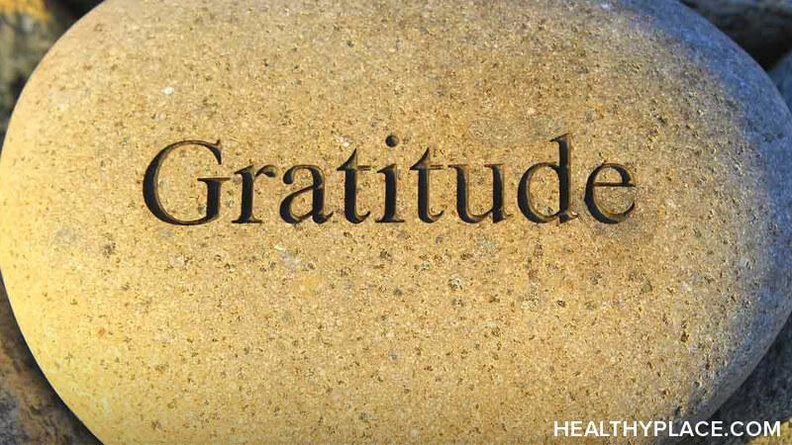Thankfulness: How to Bring Gratitude Into Your Life

Previously, I proposed that thankfulness can be an antidote to the anxiety (fear) that results from living with trauma memory (In the Midst of Trauma, Why Thankfulness Matters). Whereas anxiety, when examined, is a response to an anticipated loss (of safety, of something of value, or opportunity, etc.), thankfulness is a response to the realization of gain. It is, indeed, a perfect antidote. Remarkably, few people think of it that way. You now have a way to become an exceptional person, to stand out from the crowd: realize the value of gratitude, and act to bring it into your mind. Read on for a list of ways you can bring thankfulness and gratitude into your life.
How to Activate Thankfulness and Increase Happiness with Gratitude
Both Lyubomirsky1 and Fava2 comment on the need to intervene in your own life with the intent to increase happiness, of which a sense of gratitude is often a key part. In seeking out activities through which you increase your sense of gratitude, be prepared to be experimental. You are discovering what works best for you, and you should expect this to take both time and patience.
 Formal studies have looked at the following positive interventions as means of increasing pleasurable feelings, thoughts, and behaviors. All of the following activities can be focused on thankfulness, so I have slightly modified them to reflect this focus, where appropriate.
Formal studies have looked at the following positive interventions as means of increasing pleasurable feelings, thoughts, and behaviors. All of the following activities can be focused on thankfulness, so I have slightly modified them to reflect this focus, where appropriate.
List of Ways to Bring Gratitude and Thankfulness to Life
- Write letters of thanks.
- Count your blessings.
- Practice optimism.
- Perform Acts of Kindness
- Meditate on positive feelings toward others.
- Use your signature strengths.
Now, here's what this list of ways to be thankful means in practice.
1. Write Letters of Thanks
Write, even very briefly, to anyone one at all - but consider that such a letter might be especially helpful to certain people. We all have people to whom we would do well to express gratitude; now you can do a little catching up. You can anticipate that you will be well received, also. Everyone likes being appreciated.
2. Count Your Blessings
Probably the grandmother of all gratitude-induction techniques, it's still a dandy one, I find. One way that works very well for many people is to do a "social comparison" - look at your life in comparison to that of others who have particular challenges you do not have. Consider - you could be in a refugee camp right now, had you been born elsewhere. You could be a barely alive survivor of a workplace explosion. And so on...there are so many things that would be really truly challenging which in reality have NOT happened to you.
3. Practice Optimism
For some people this may require a distinct effort, but give it a try. Look at any of the many uncertainties in your life. Consider potential positive outcomes that you haven't yet looked at. Consider your good fortune in simply having these possibilities in your future (Self-Help Stuff That Works: Optimism).
4. Perform Acts of Kindness
This can be done for people, animals, or even plants! What matters is that you are giving of your time and attention - an act of appreciation. When doing this, you could be grateful for any of several things, for example, your ability to be a force for good, or your good fortune in having these entities in your life to respond to, or some particular quality of the object of your attention for which you are particularly grateful. If you're engaging with people or animals, you're likely to get a positive reaction - something else for which to be thankful.
5. Meditate on Positive Feelings Toward Others
This is a meditative practice found in several wisdom traditions, so it must be a good one. Think of people who you appreciate, in any way at all. Linger, in your awareness and memory of them, on this appreciation. Do this with more than one person, if possible.
6. Use Your Signature Strengths
Everyone has several things at which they are at least fairly competent. Consider what your competencies might be. Possibly ask someone you trust for some feedback. Consider what you life would be like if you did NOT have these skills. This relates to #2, above, and may also relate to 1 and 4. There is potential in this particular practice for some self-esteem building, certainly.
A Thankfulness and Gratitude Experiment
Those are all good starting points for any of us. Use the list to begin a series of personal experiments. Here's the general form I would suggest: pick an intervention that you think you can do. Give it some time - at least 5 minutes, but 20 minutes or more would be better. Keep notes - what you did, what you thought and felt as you did it. Then later today, review your notes, and add to them a note about what it's like for you to revisit what you did earlier.
It would be interesting and valuable to hear about any of such experiments you undertake, so I hope you return here to comment about them. Other people would surely like to hear about the work of other on this little project, too. It has great potential value!
Notes
1. Discussed in: Krakovsky, M. (2007, March 18). The Science of Lasting Happiness. Scientific American.
2. Fava, G. A. (2012). The clinical role of psychological well-being. World Psychiatry, 11(2).
Connect with Tom Cloyd also at Google+, LinkedIn, Facebook, Twitter, his Sleight of Mind blog, his Trauma Psych blog, and the Tom Cloyd website.
APA Reference
Cloyd, T.
(2013, December 11). Thankfulness: How to Bring Gratitude Into Your Life, HealthyPlace. Retrieved
on 2025, December 17 from https://www.healthyplace.com/blogs/traumaptsdblog/2013/12/thankfulness-how-to-bring-gratitude-into-you-life